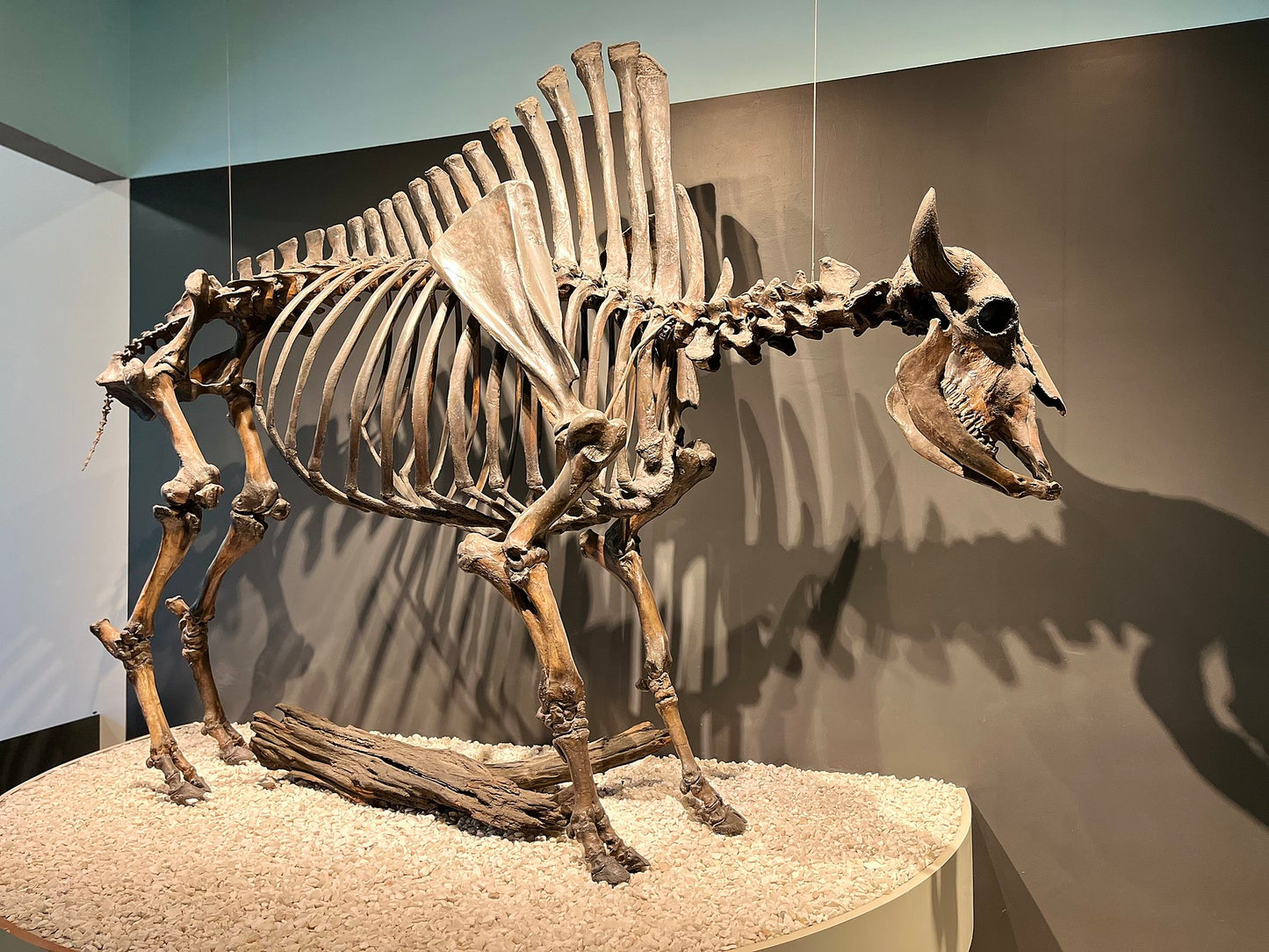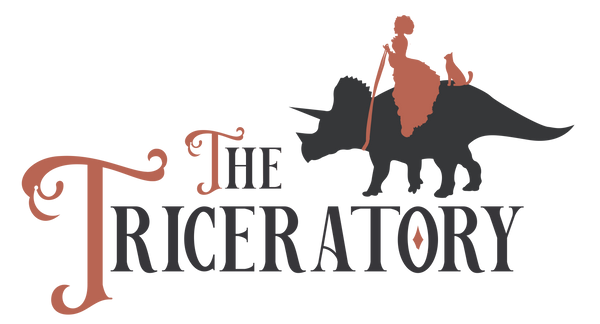Pleistocene (Ice Age) Bison Ulna Bone Fossil
Pleistocene (Ice Age) Bison Ulna Bone Fossil
Couldn't load pickup availability
Over 10,000 years ago, during the Pleistocene era (commonly known as the Ice Age) this Bison Antiquus, an ancestor to today's Bison, grazed in the Savannahs of what is now western Kansas.
This is the fossilized remains of an ulna, the caudolateral bone of the foreleg. It is about 12" long and comes with the vertical wooden stand it is shown with.
Full fossil image shown is from the la Brea Tar Pits in Los Angeles, California.
See below in the "History | Science" tab for more information.
History | Science
History | Science
Bison Antiquus, a direct ancestor of today's bison, was the most common large herbivore in the North American continent during the Pleistocene, commonly known as the Ice Age. They showed up in the North American continent during the middle Pleistocene, around 220,000-240,000 years ago and died out around 10,000 years ago, due in part to human hunting, although scientists now believe there were other reasons, as well. Much of what we know about Bison Antiquus comes from fossils gathered from the le Brea Tar Pits in Los Angeles, California, where Bison Antiquus fossils are the most prevelent fossils found in the tar pits.
During the Pleistocene, in what is now Kansas, the warm, shallow sea of the Cretaceous period had given way to savannah. Glaciers touched and receded from the uppermost part of the state. And animals such as camels, saber-toothed cats, ground sloths, mastodons were common residents during this time, along with animals we would recognize as the ancestors of today's North American animals, such as bison, deer, and horses. These fossils are primarily found in the Western part of the state.
Disclaimers
Disclaimers
Photography
Although we always strive to provide clear, accurate images of our crystals and other products, we photograph under professional lighting, which is meant to mimic sunlight. If you get your crystal and think it looks a little different under low or artificial light, try checking it out again in sunlight!
Our crystals are one-of-a-kind art, created by nature.
No two pieces are the same, and there is no such thing as "perfection" in nature.
When it comes to our hand-carved items, remember that artists work with and around imperfections, druzy pockets, and other natural variations to bring each carving out of a piece of natural stone.
We consider these imperfections to be one of the most wonderful parts of crystal collecting, and we invite you to embrace each carving's uniqueness!
We will always try to portray each piece honestly, so be sure to look closely at our images and videos to ensure you know what to expect.
Metaphysical Information
Metaphysical information mentioned anywhere by The Triceratory should not be considered medical advice and is not meant to be used in place of needed medical treatment.
Share














